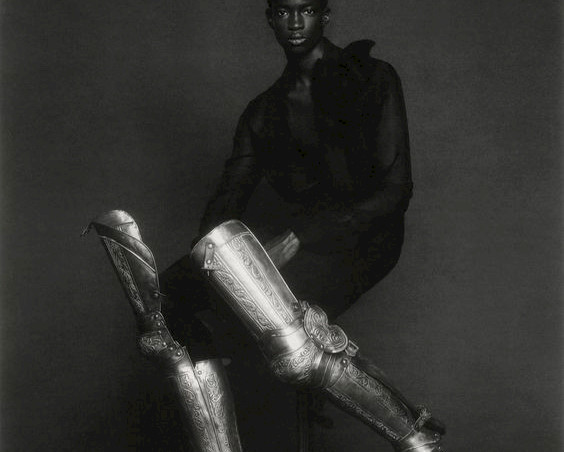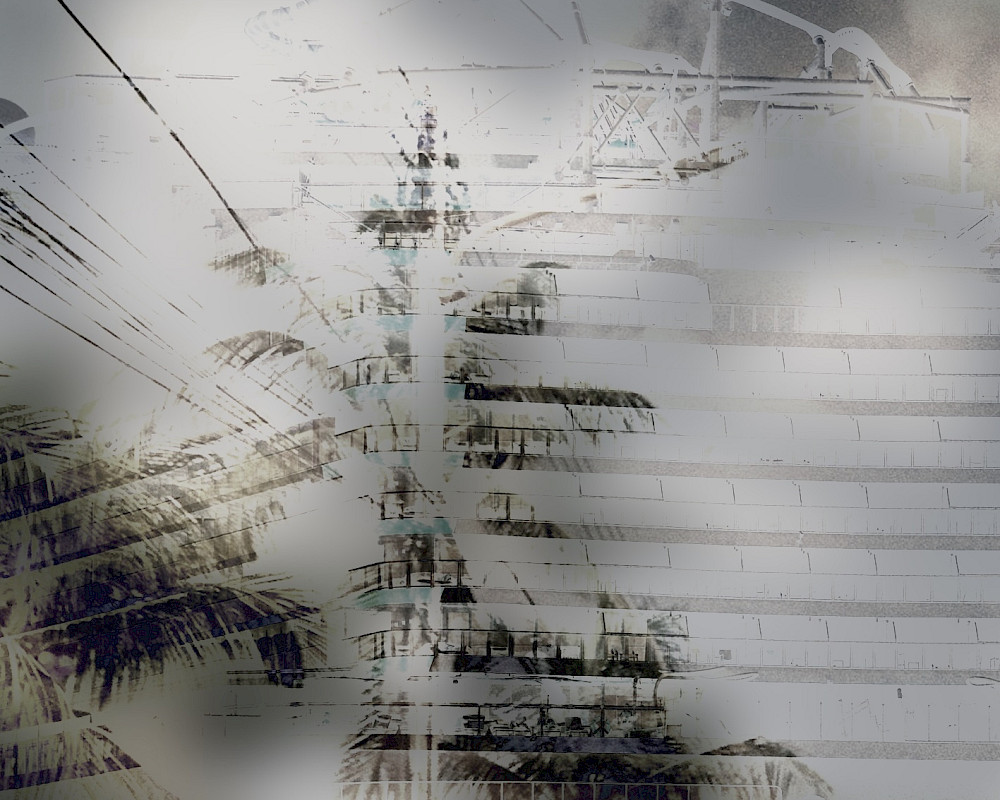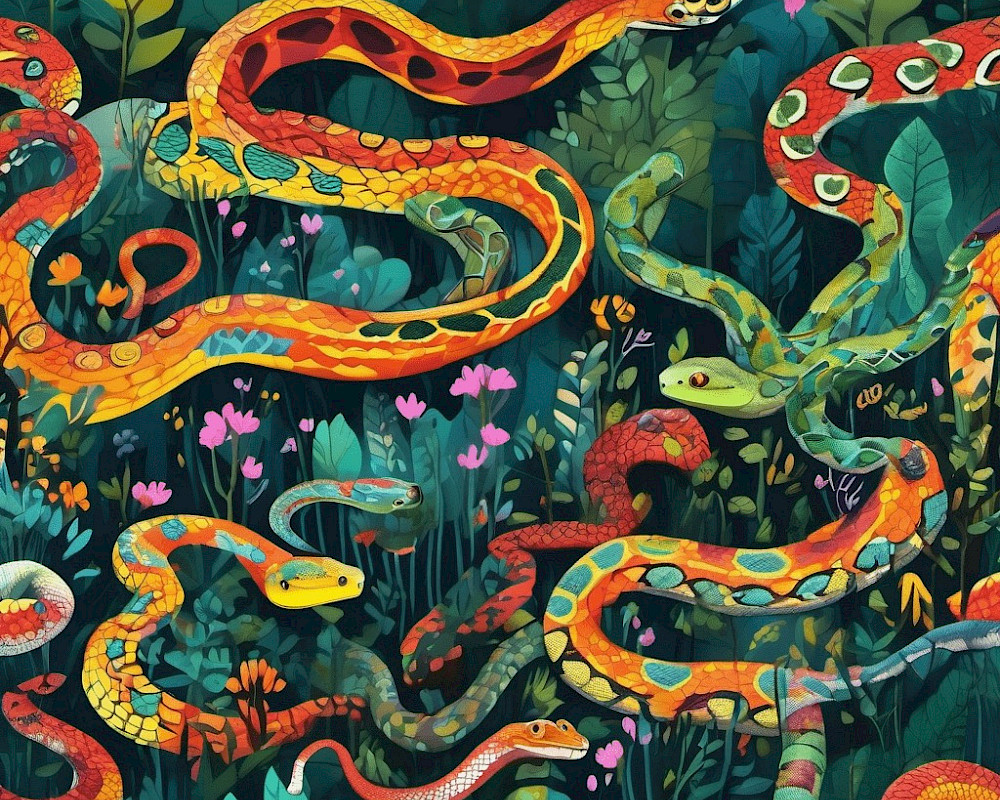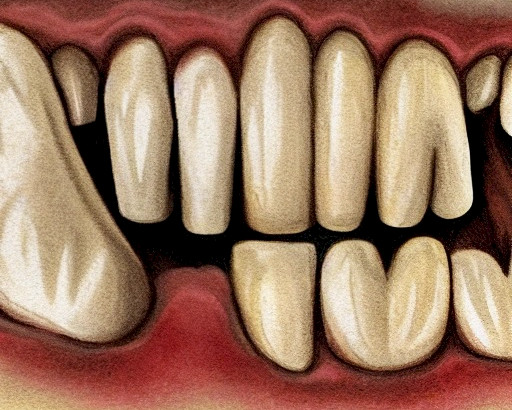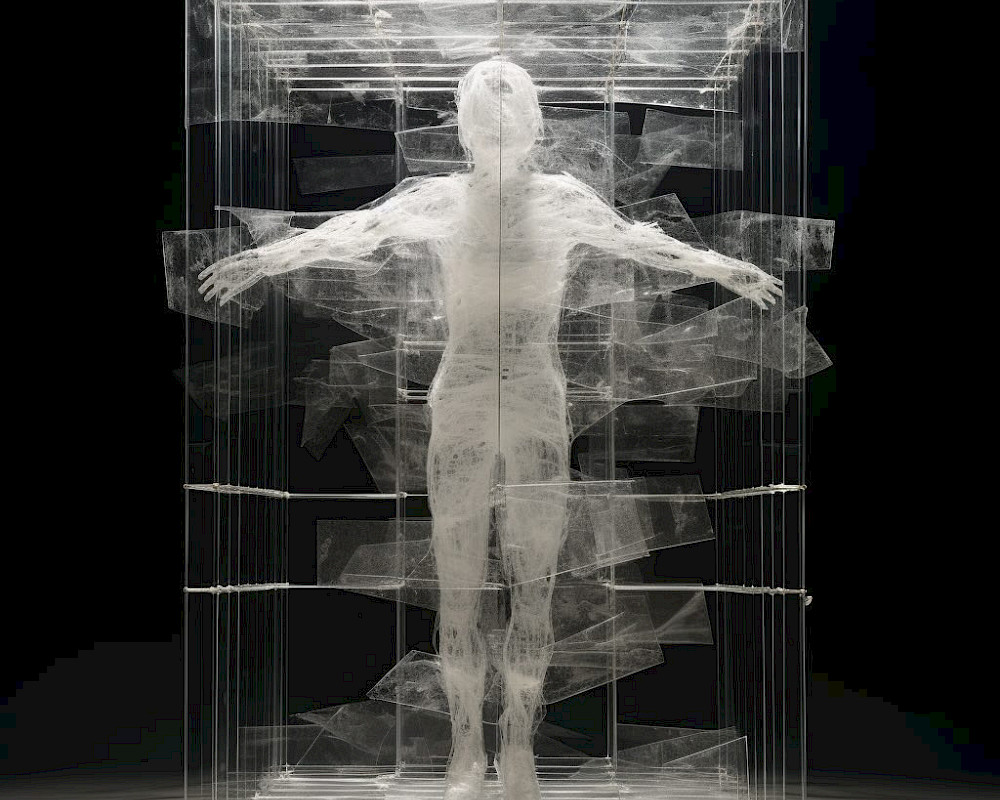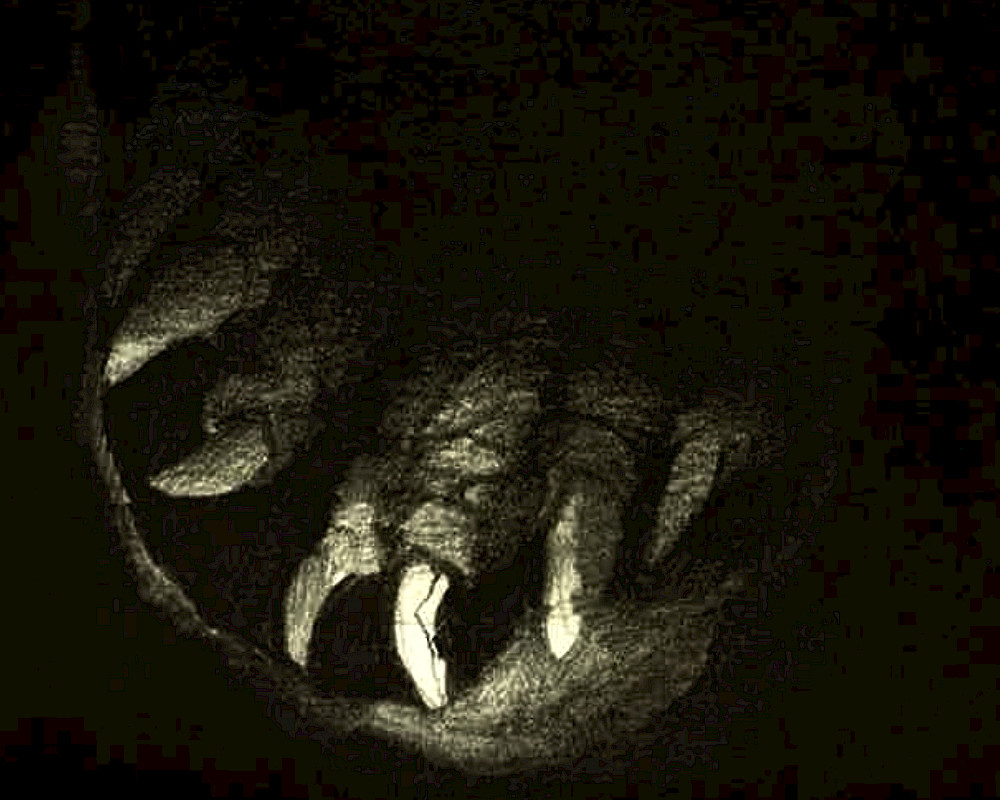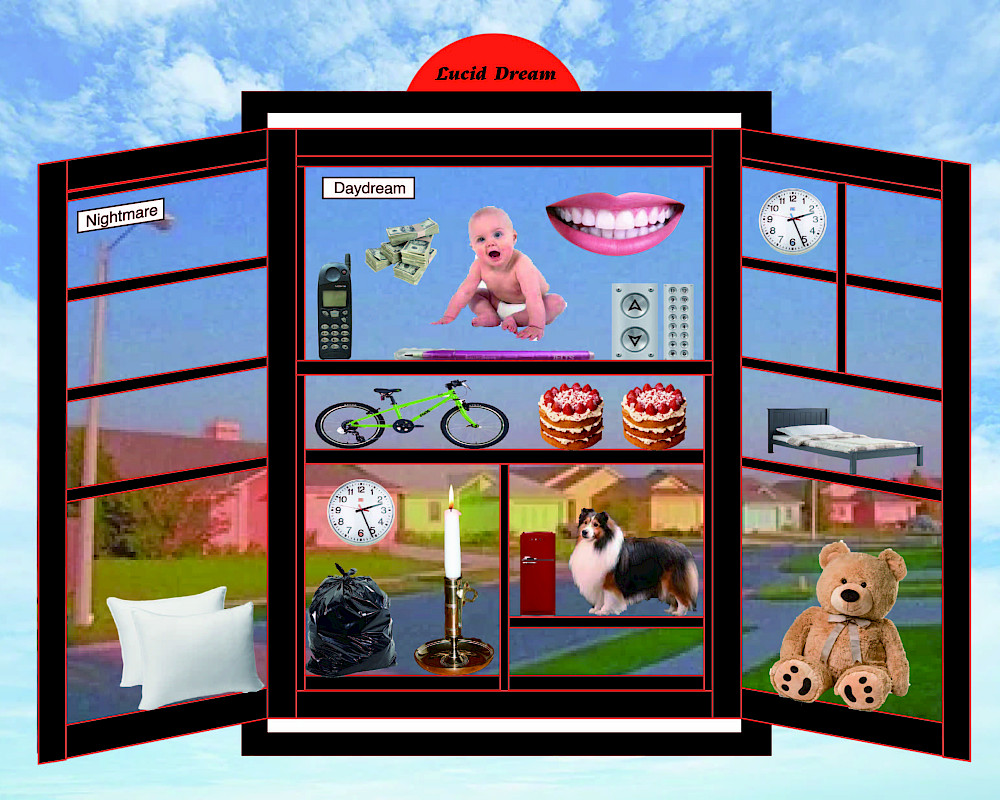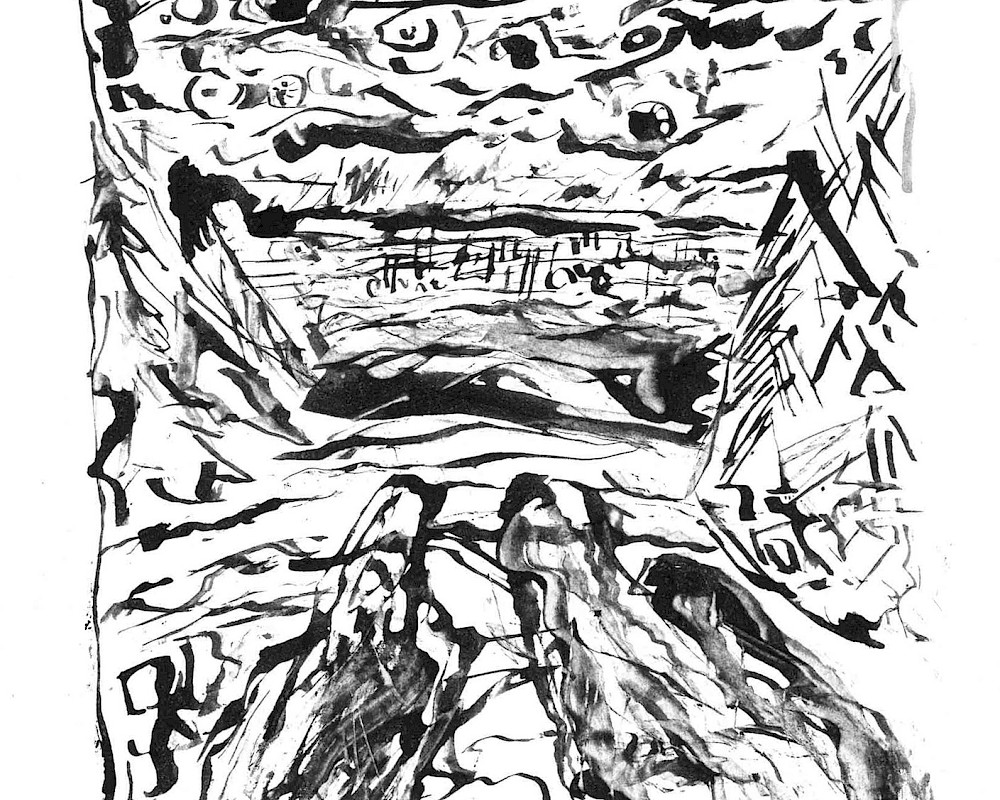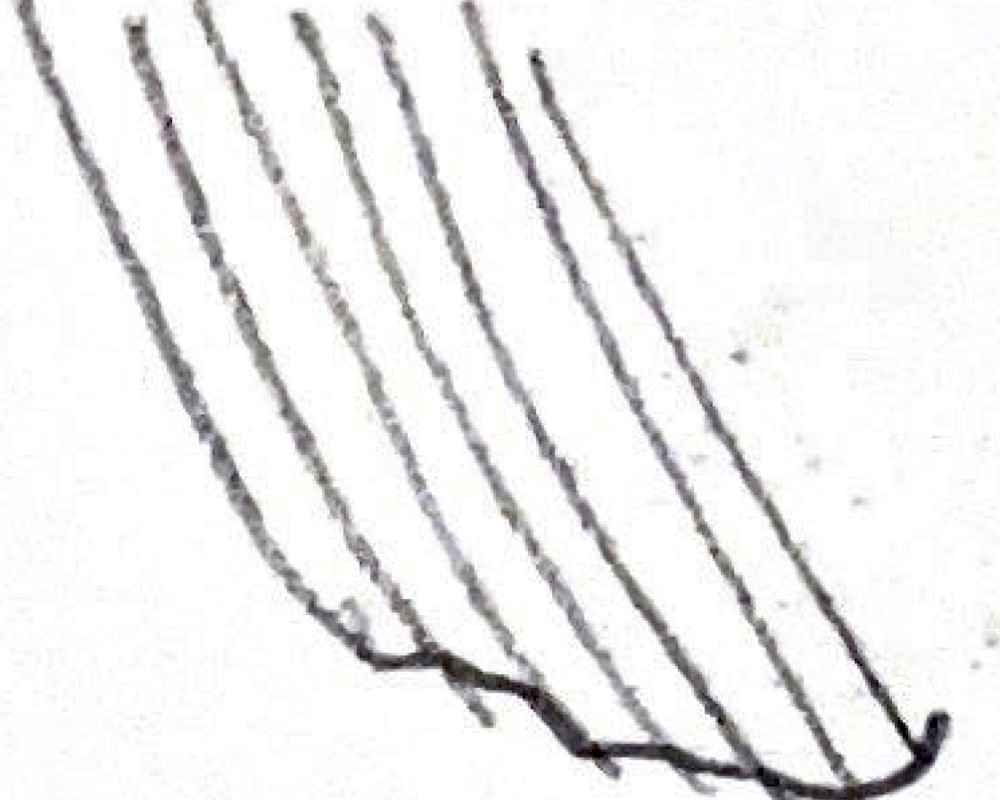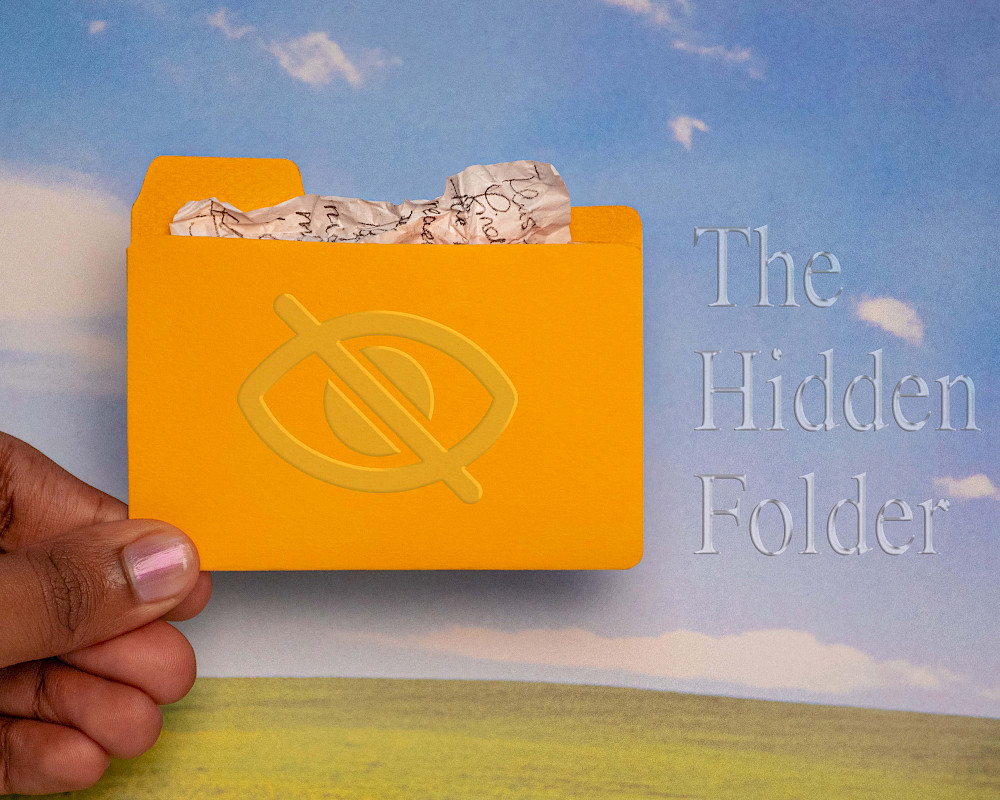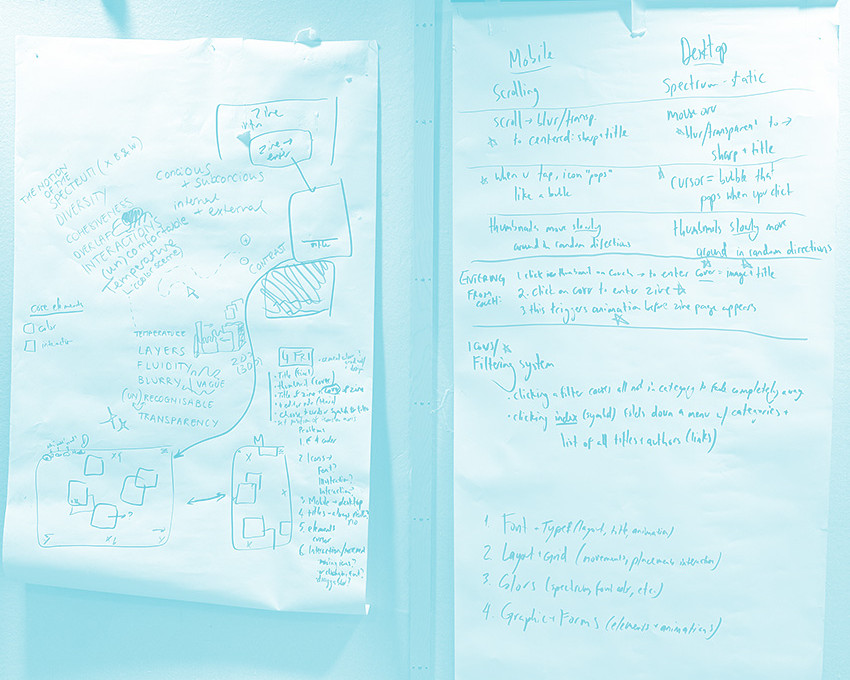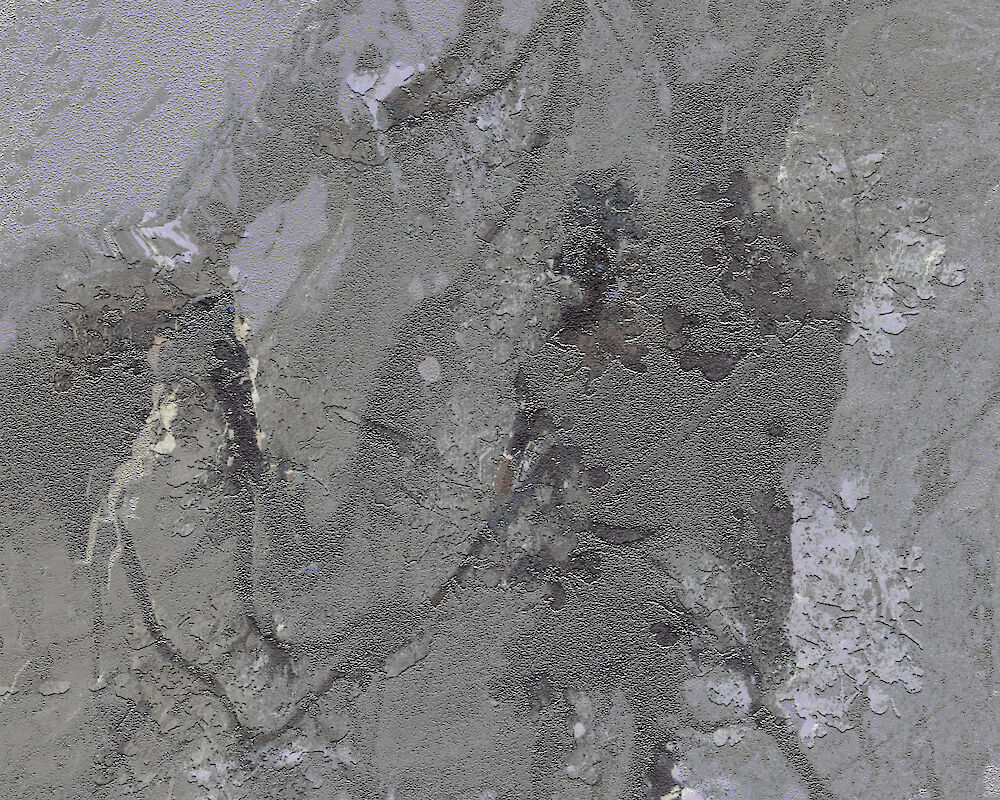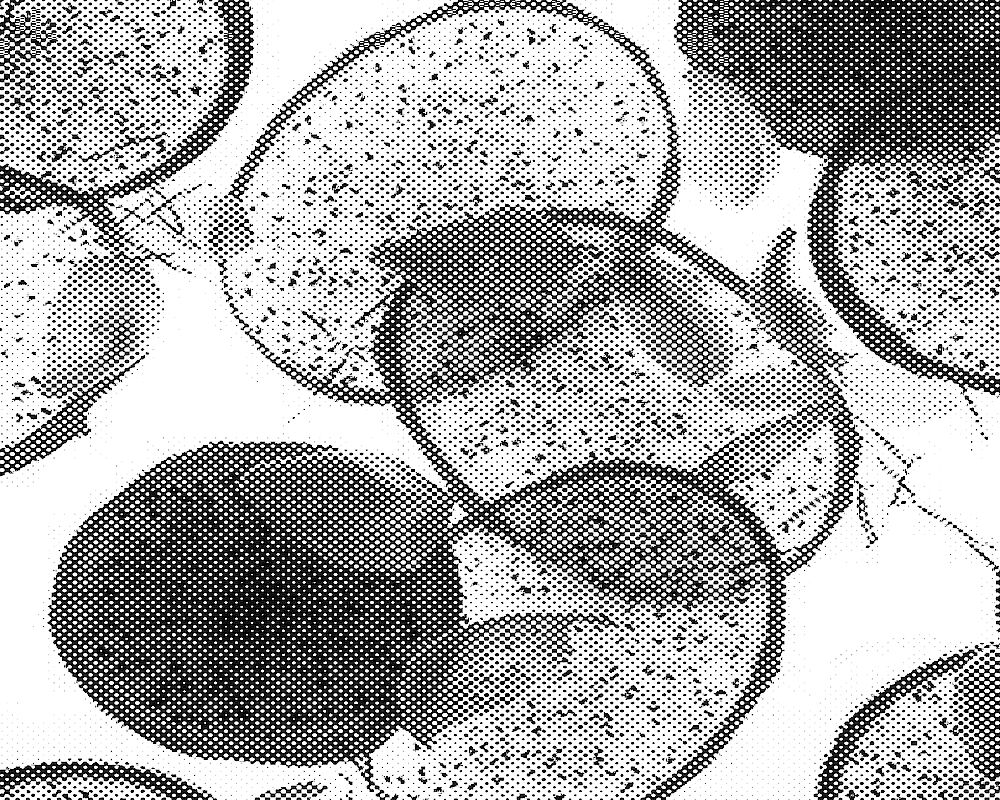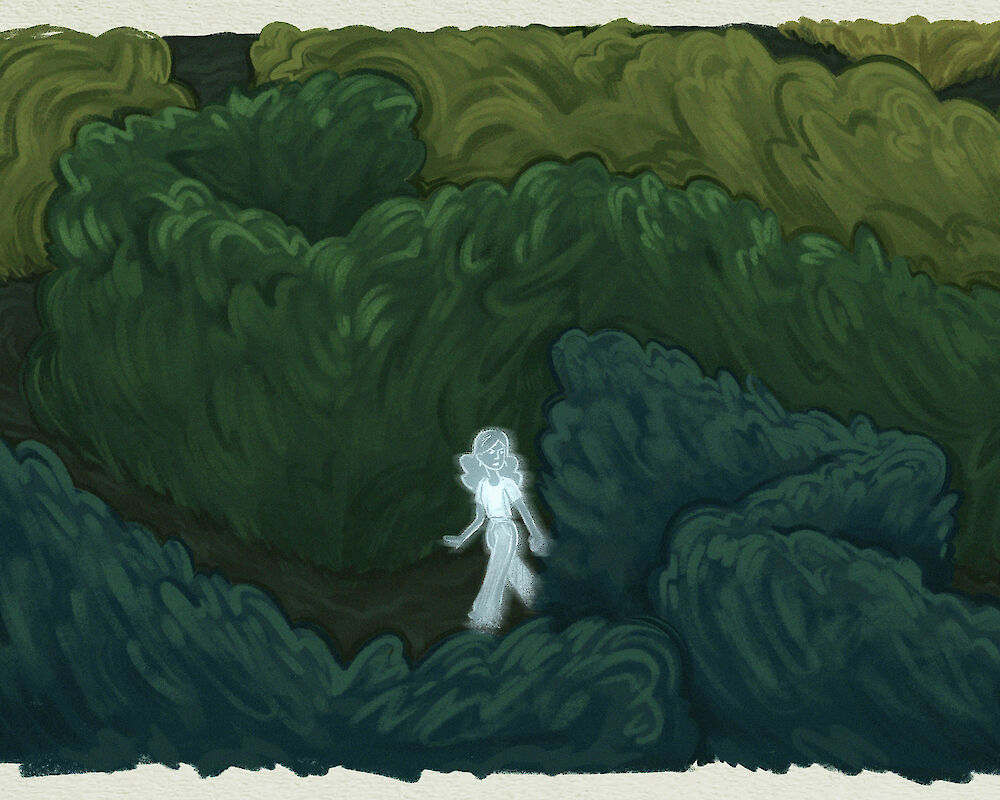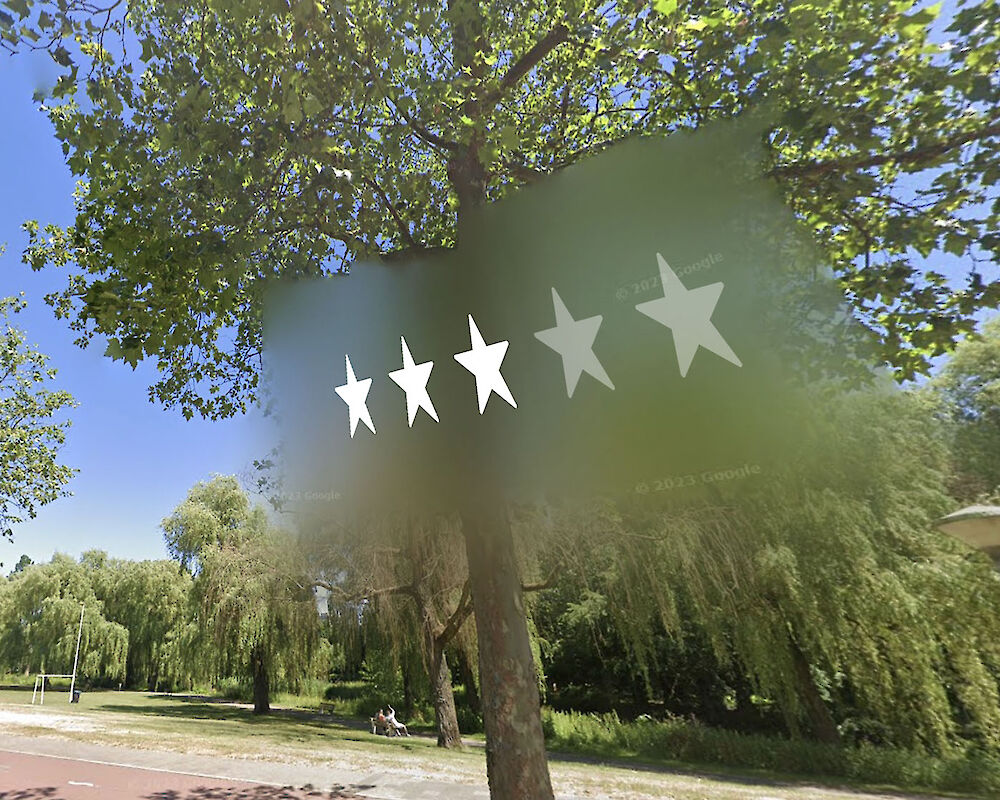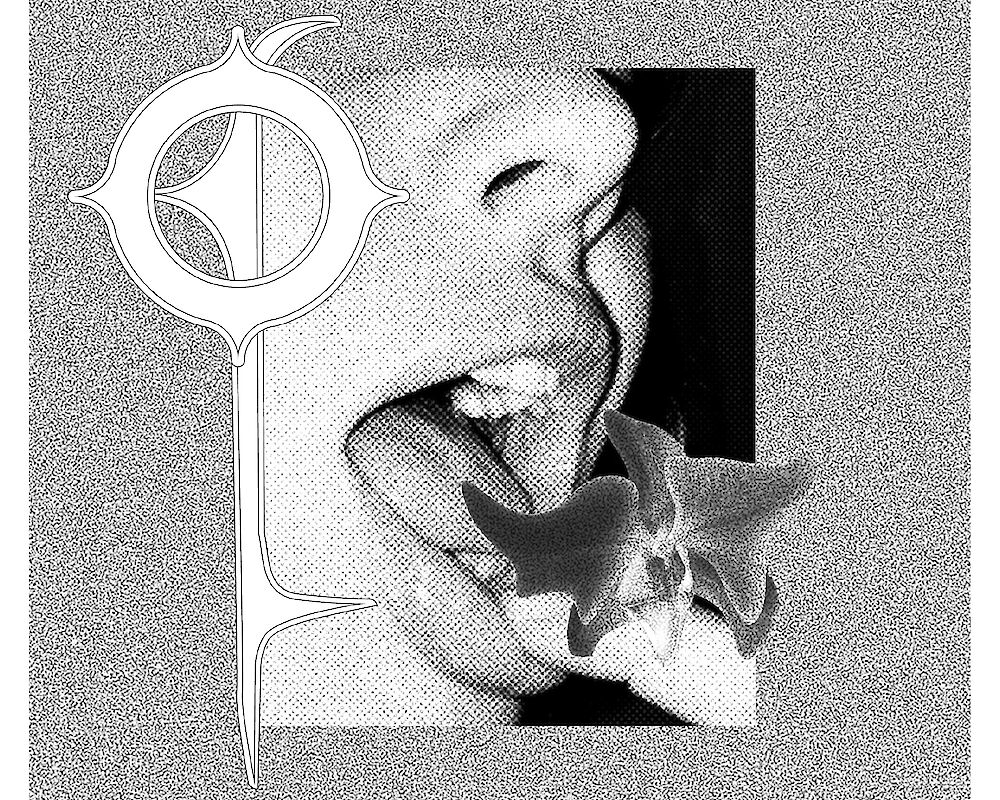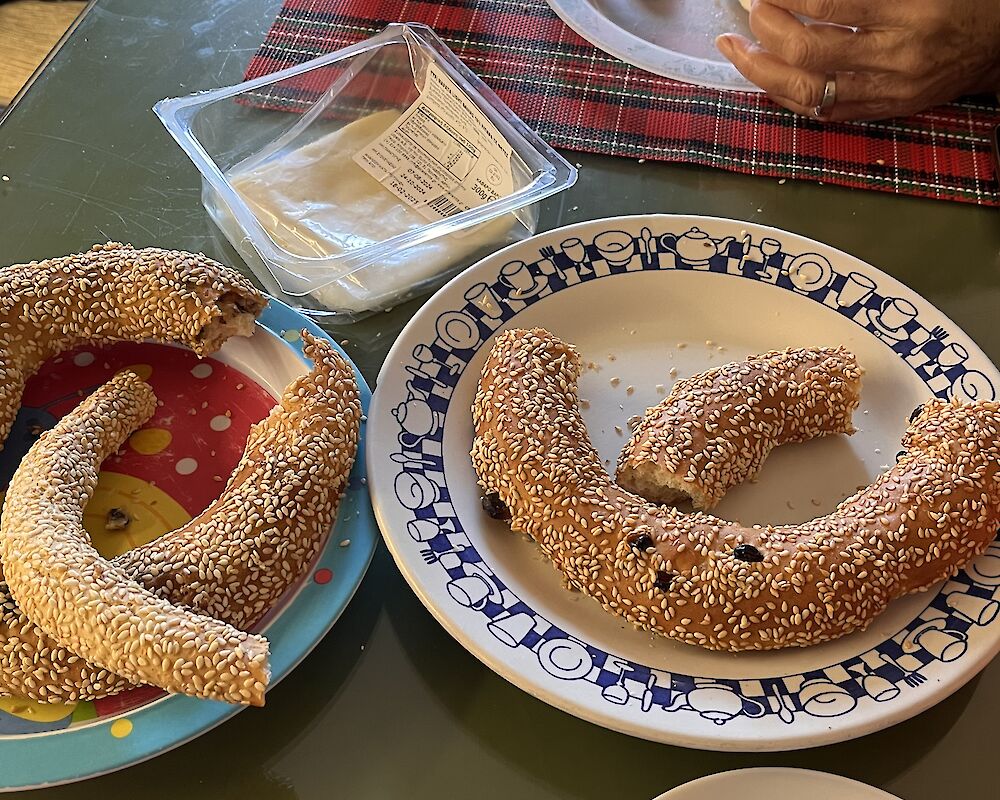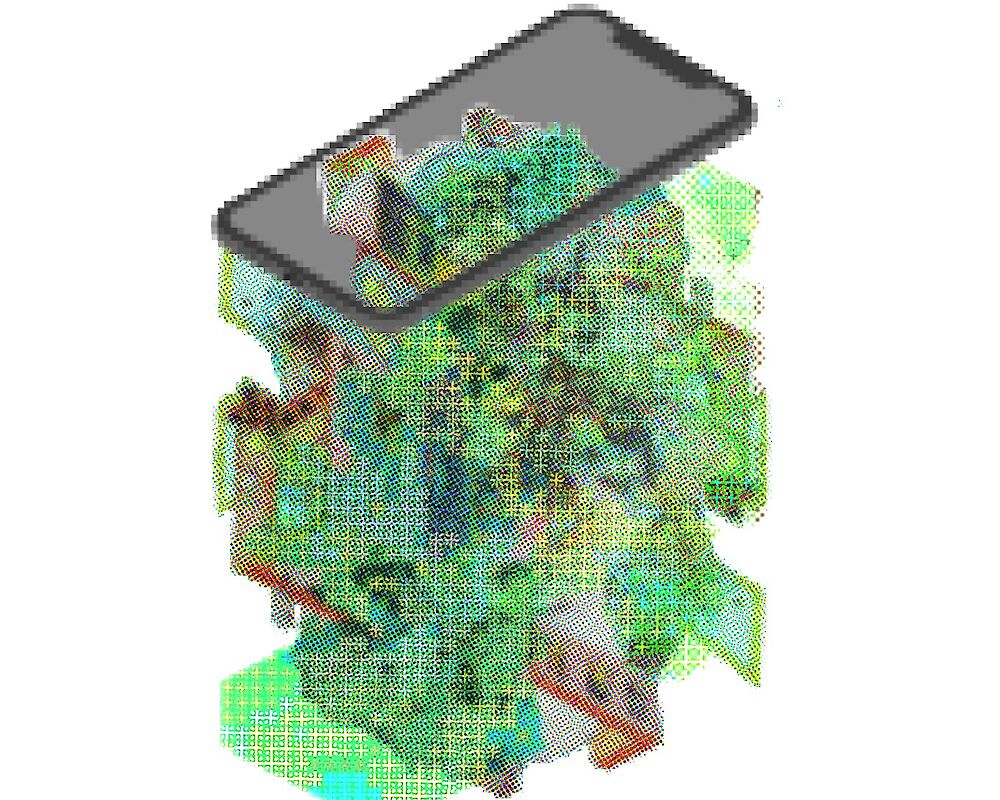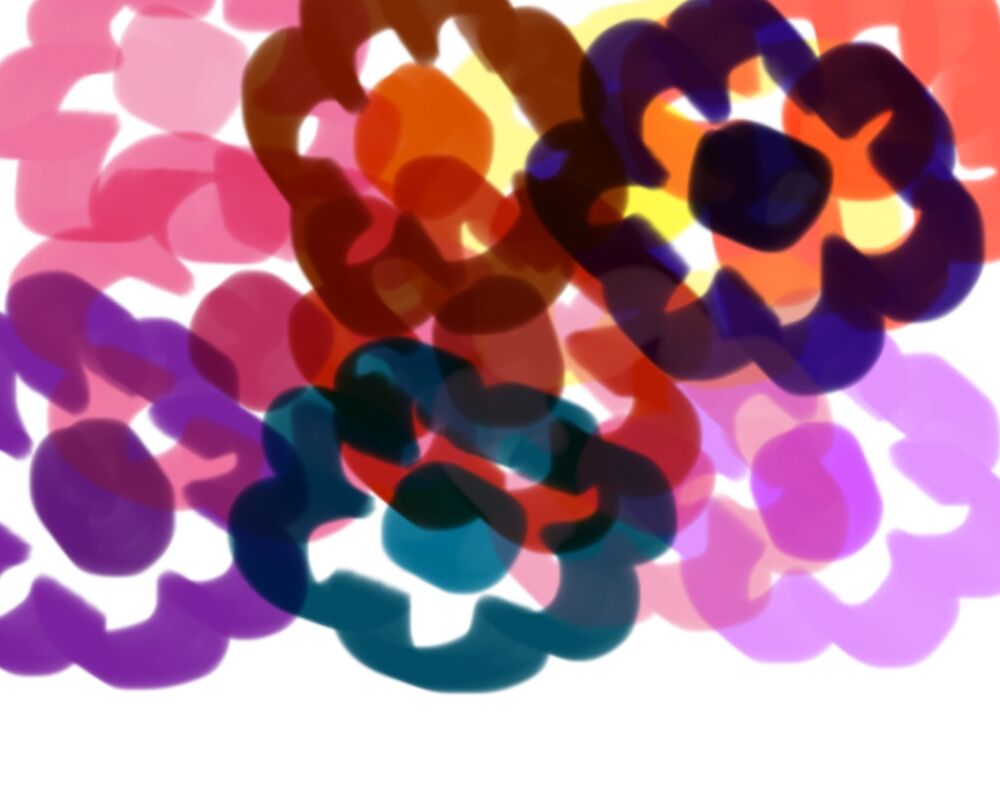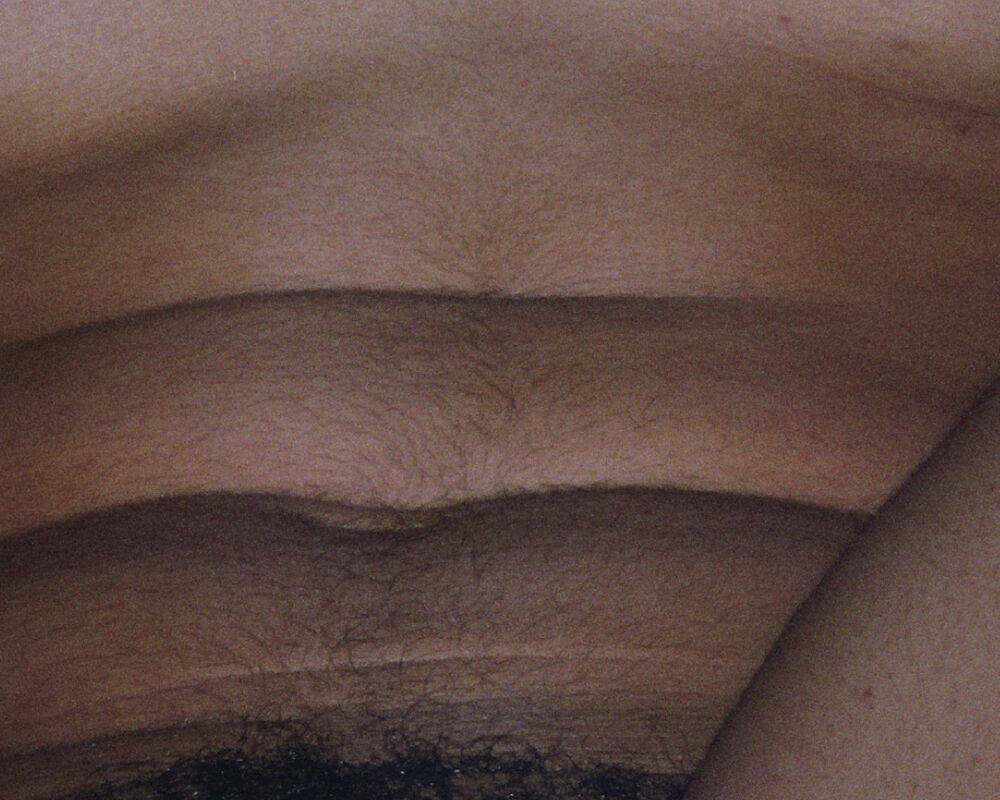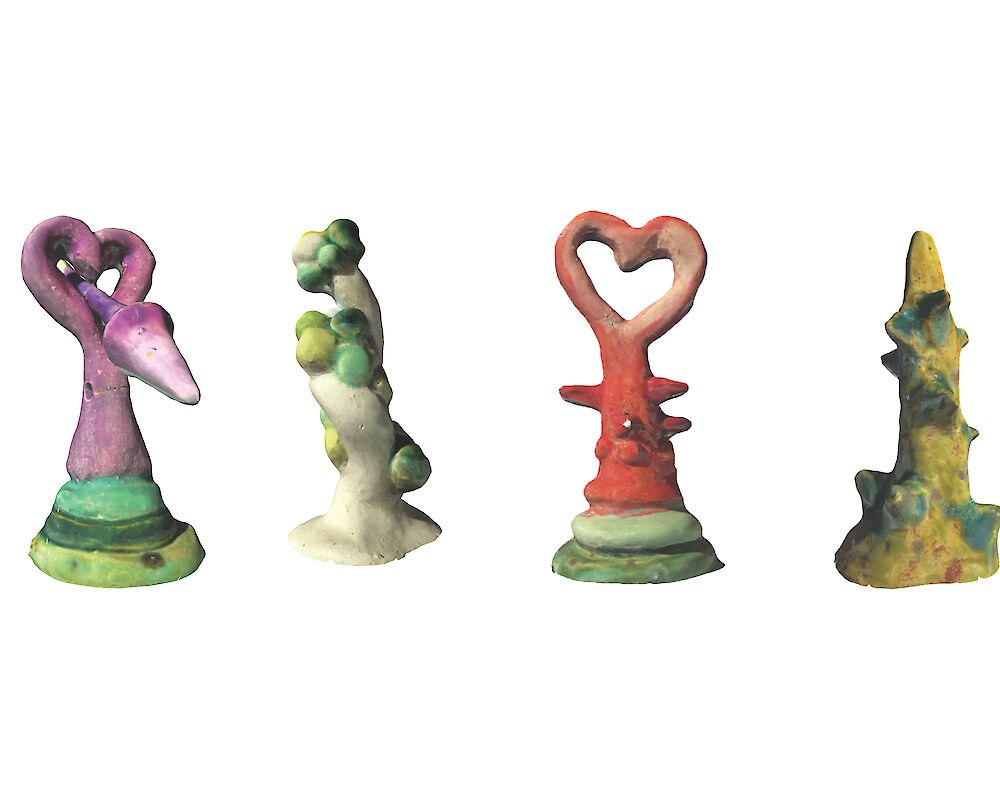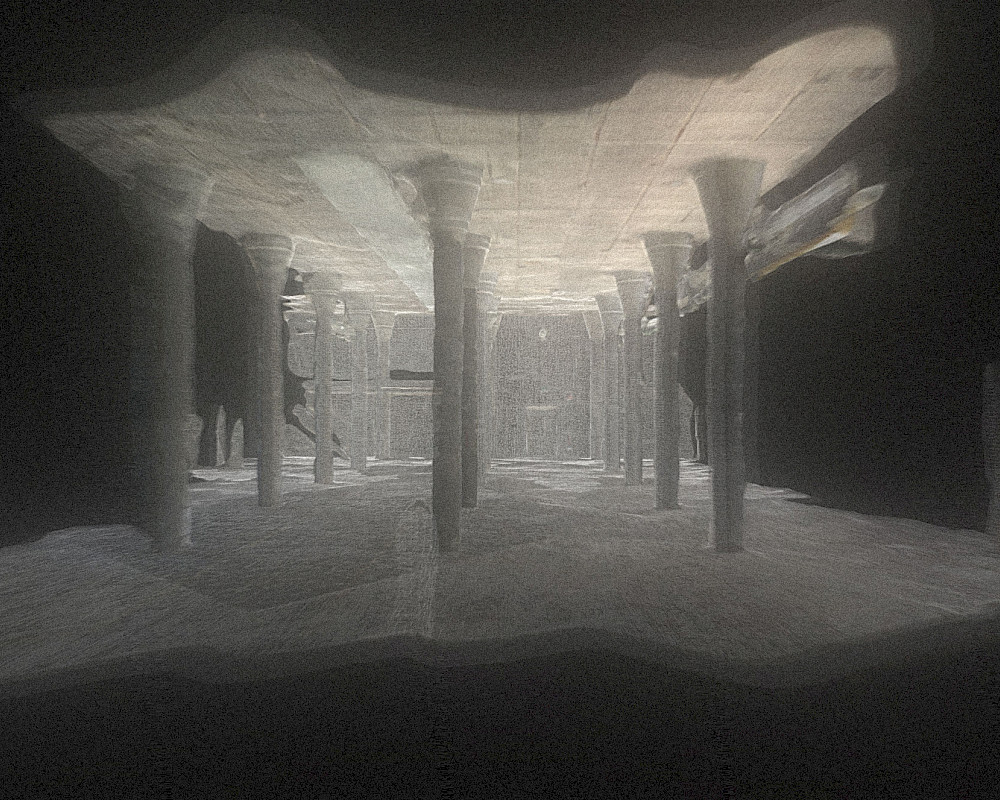essay
Babe… It’s Time to Get a Haircut
Derrick Crichlow
Derrick Crichlow is a Curaçao born and Rotterdam based designer and visual artist. In his work he aims to explore spatial contexts which relate to the intersection of queerness and blackness.
Bung
@globalplayer55
9
min readIn what way is fading a means of internally & externally bending “dreams” beyond the black barbershop?
Author’s note: This text is accompanied by a sonic interpretation of the barbershop context and the contrasting emotions I encounter when I am there. The piece was made by my dear, talented friend Bung, whom I want to thank for her time, passion and dedication.
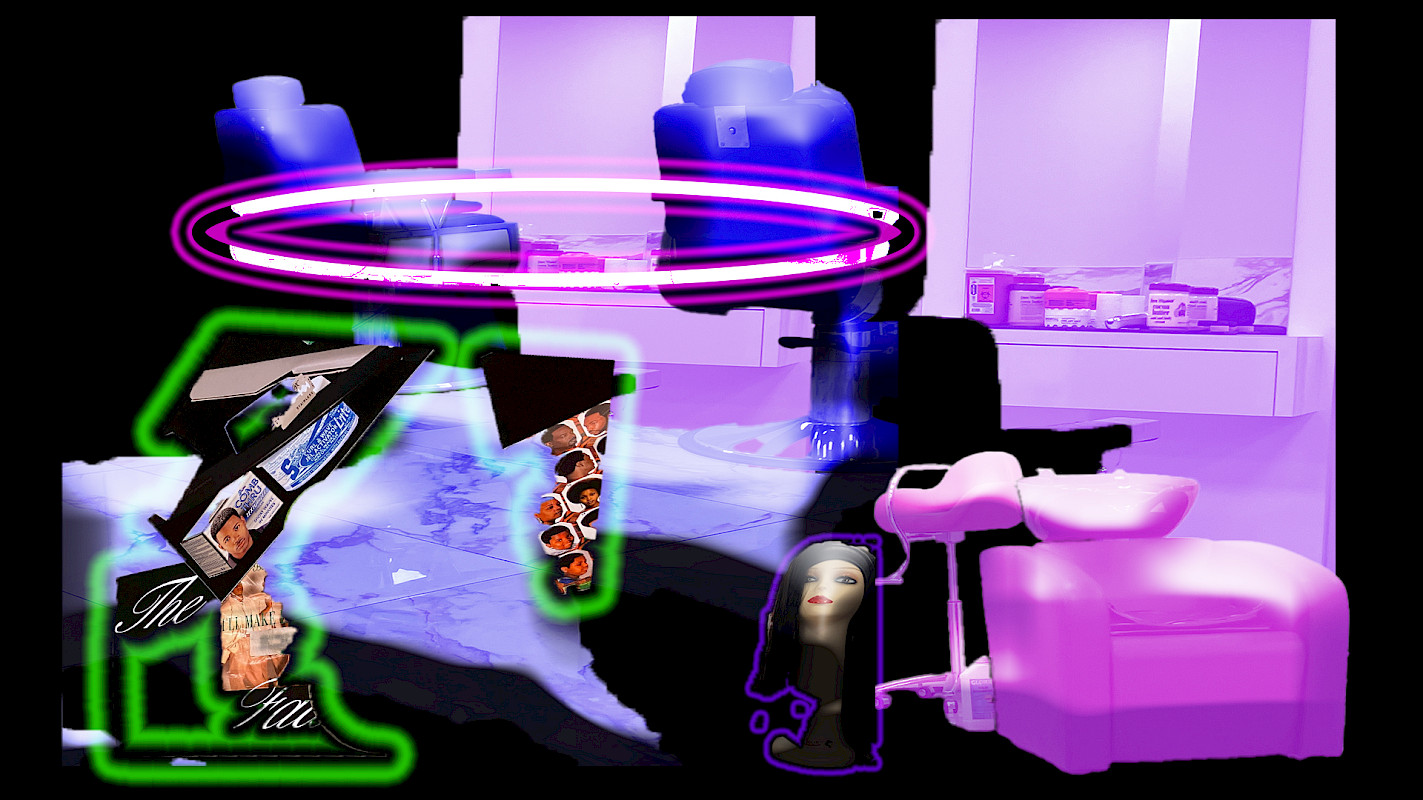

0.0MM SHAVER.
As long as I can remember I have been gazing in the mirror at my hair. On a daily basis I thoroughly inspect how my hair grows out. Running my fingers through the short coils forming, only a week after getting a fresh fade. They leave an oily and sticky feeling on my fingers, residue of the coconut aroma pomade I use on my hair every morning. They are all signifiers that I need a haircut, but rarely does it mean I am feeling eager about going to the barber. Going there feels as if I will grow faint and gradually disappear(1). Throughout my twenty-four years of being alive I have grown out my hair three times, the last time being around a year ago. I really felt some type of way knowing how to take care of my afro, being familiar with the feeling of an abundance of gels, creams, and oils in the palms of my hands. Eventually I came to the point of making the effort to cornrow it down at my cousin’s when visiting Curaçao in September. During the winter two strand twists were done by my sister and myself, securing the ends with metal pin curl clips as an accessory. I was looking mad good boo. But somehow spoken and unspoken pressure weighed me down. I felt extremely perceived, it seemed like everybody, and their mother was opinionated about the look I was sporting. I do not know what it was, but I could not deal with the pressure I felt anymore. It led me to opt back to a rigorous and oh-so-familiar safety net: the fade. Once the choice to go back to this style was made, I remember I was feeling so disheartened in that hour at the barber. Sitting in the barber chair, witnessing a year’s worth of growth softly falling by the sides of my shoulders. But after a few days, as I was gazing in the mirror at my hair again, I could not help but feel brand new. I feel a connection with the fade, even though for me it means complying with fading erasure of my queerness. That day every pass made with the electric razor emphasised how the fade, internally and externally, bends dreams beyond the black barbershop space.
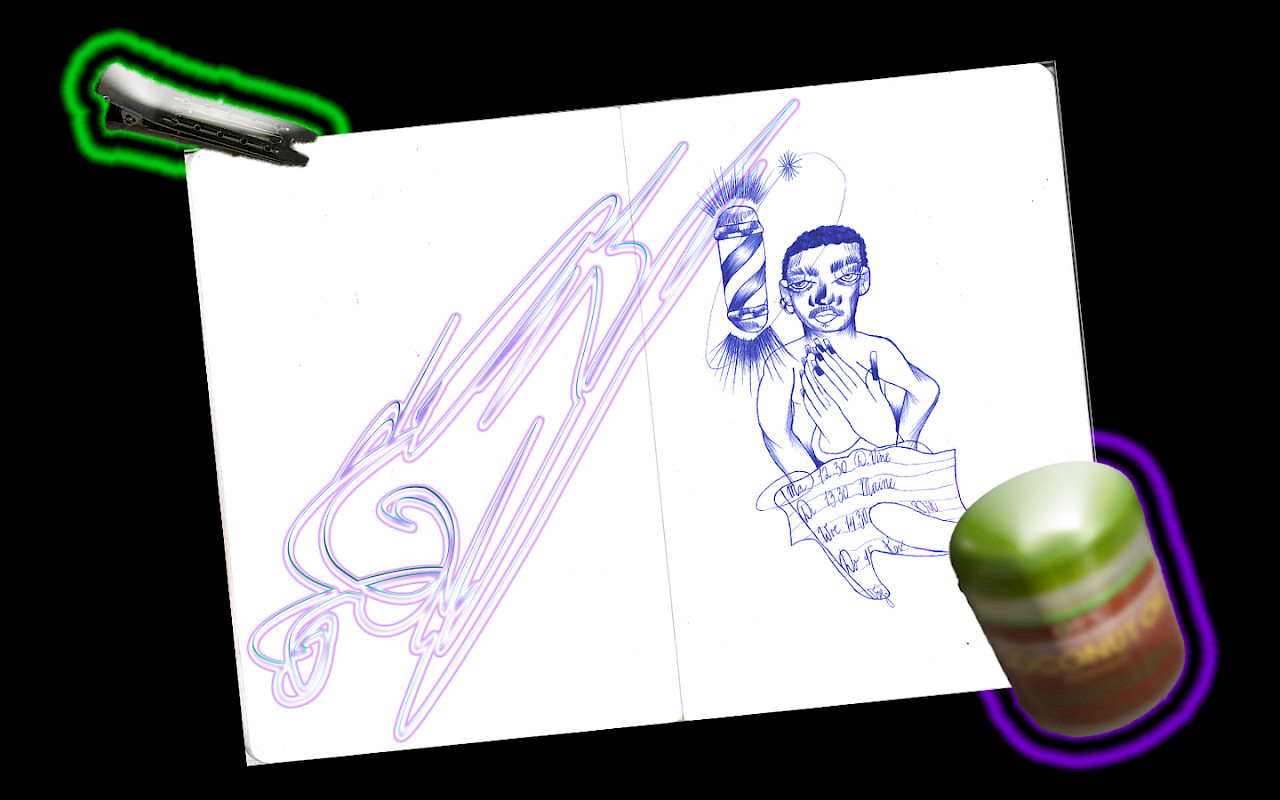
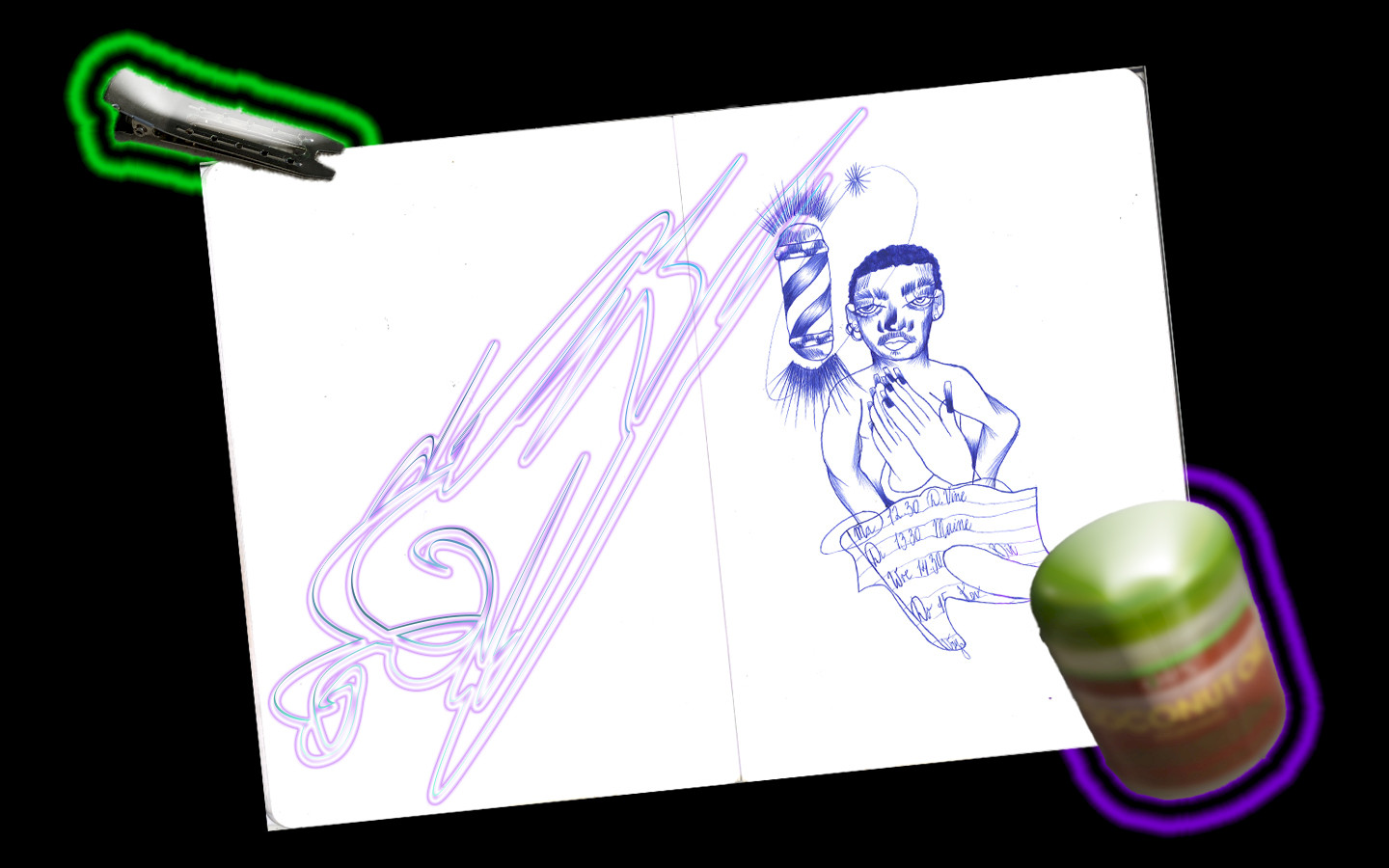
0.5MM INTERNAL FADE.
In this text I consider how notions of linearity become - eventually - non-linear. It creates a looped structure based on fleeting experiences, which exist within both realms of dreams. Internally this bend starts as soon as I leave the door on my way to the barber. The barbershop I regularly visit (and consider as my go-to for a good haircut) is located around the corner from my house, so I use the short one-minute walk to mentally pep-talk myself. It will start with reminding myself not to call the barber babe. Next to this I make my already deep voice one octave lower, just in case the gay slips out. My favourite squared toe boots, which would sound particularly amazing on the fake marble flooring they have in the barbershop, ironically stay in the closet. I enter the barbershop, de-queered, and sit down in the chair.
“What are we doing today?”
I remember my mental pep talk and reply: “A skin fade on the sides and can you take a bit off the top?”
On the one hand getting a fade asks me to initiate a process which breaks down notions of my queerness. It meticulously “de-yassifies”(2) the usage of vernaculars I engage in to feel like myself in certain spaces, while externally demanding a more sober adornment of my body. On the other hand, I weirdly enjoy being there, it is a space of community and a witness of black culture and its importance of grooming. There is this inherently unspoken understanding of what grooming means within black communities. As a kid for instance, I was not allowed to leave the house before being freshly showered, moisturised from head to toe in cocoa butter and powdered with Johnson’s baby powder. The same applies to our hair. Bi-weekly visits to the shop are vital to keep up the length of our hair, making sure the edge up is as sharp as possible. Everybody goes there for this reason, but for many it is also a space to come together and hang out. I notice the collective togetherness and love between black men present in the space. Yes, it is a slippery slope for expressions of my queerness, especially as toxic masculinity is the norm in these contexts, but its aspects are reminiscent of surroundings where I do feel safe and taken care of.
Thus, even though internally the barbershop fades, externally it functions as a place of endless possibilities consisting sentiments of futurity. This exact sense of futurity is envisioned (visually and vocally) in Black To Techno (2019) (3), a documentary directed by Jenn Nkiru. The documentary elaborates on techno and its roots in narratives from black communities in Detroit. Within Black to Techno, an excerpt of Hot Irons (1998), directed by Andrew Dosunmu, specifically aligns with black grooming as a futuristic act. We learn somebody’s mom’s friend Yvette works at a 24/7 operating hair salon where, for instance, after a night of partying one could get a plethora of touch ups for their look. Mentioned styles include your asymmetrical, flip, bob, feather, fade, or Jheri curl (4). Honestly, they were onto something. Imagine going to the barber at 6 AM, completely danced out and thinking about throwing a lace front on top of your already fresh fade. This versatility of black aesthetics through grooming, being able to drastically look brand new within hours, is a witness of futurity. While entering this space the internal fade becomes remixed…(5)
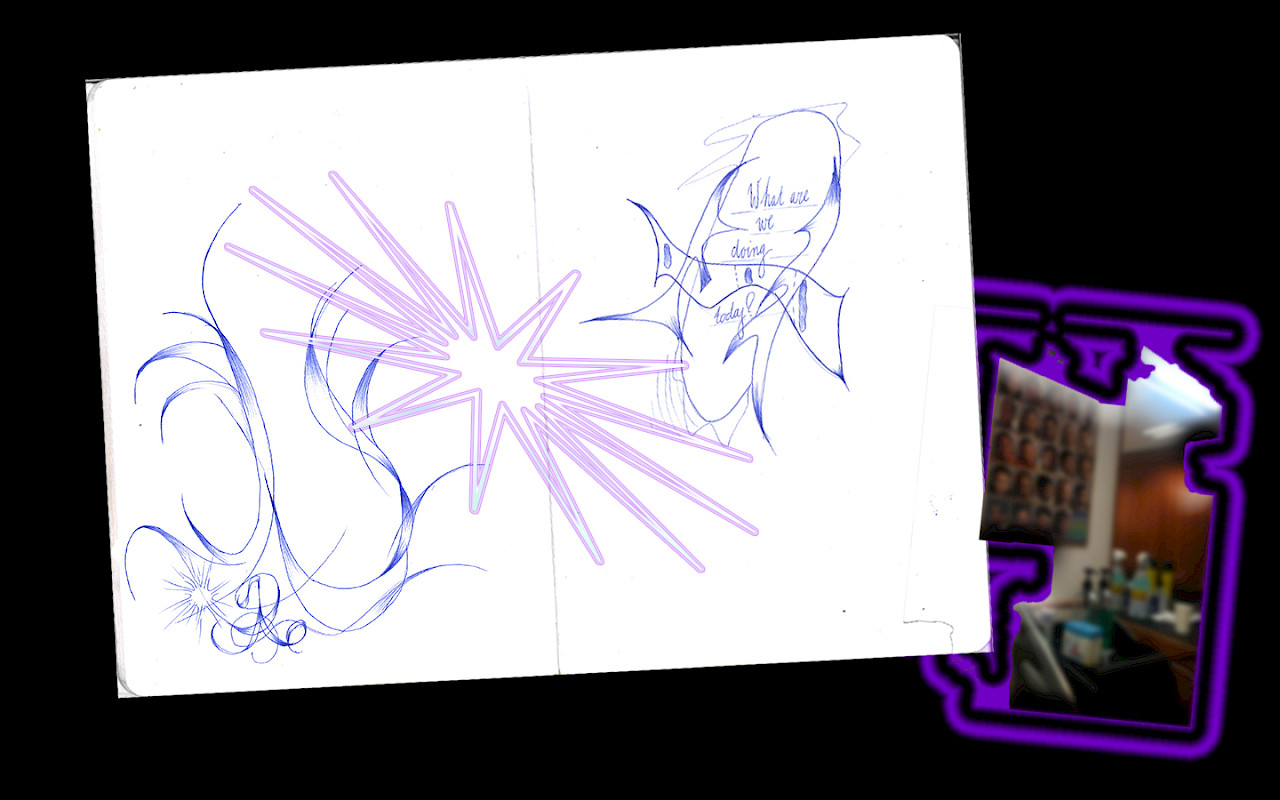
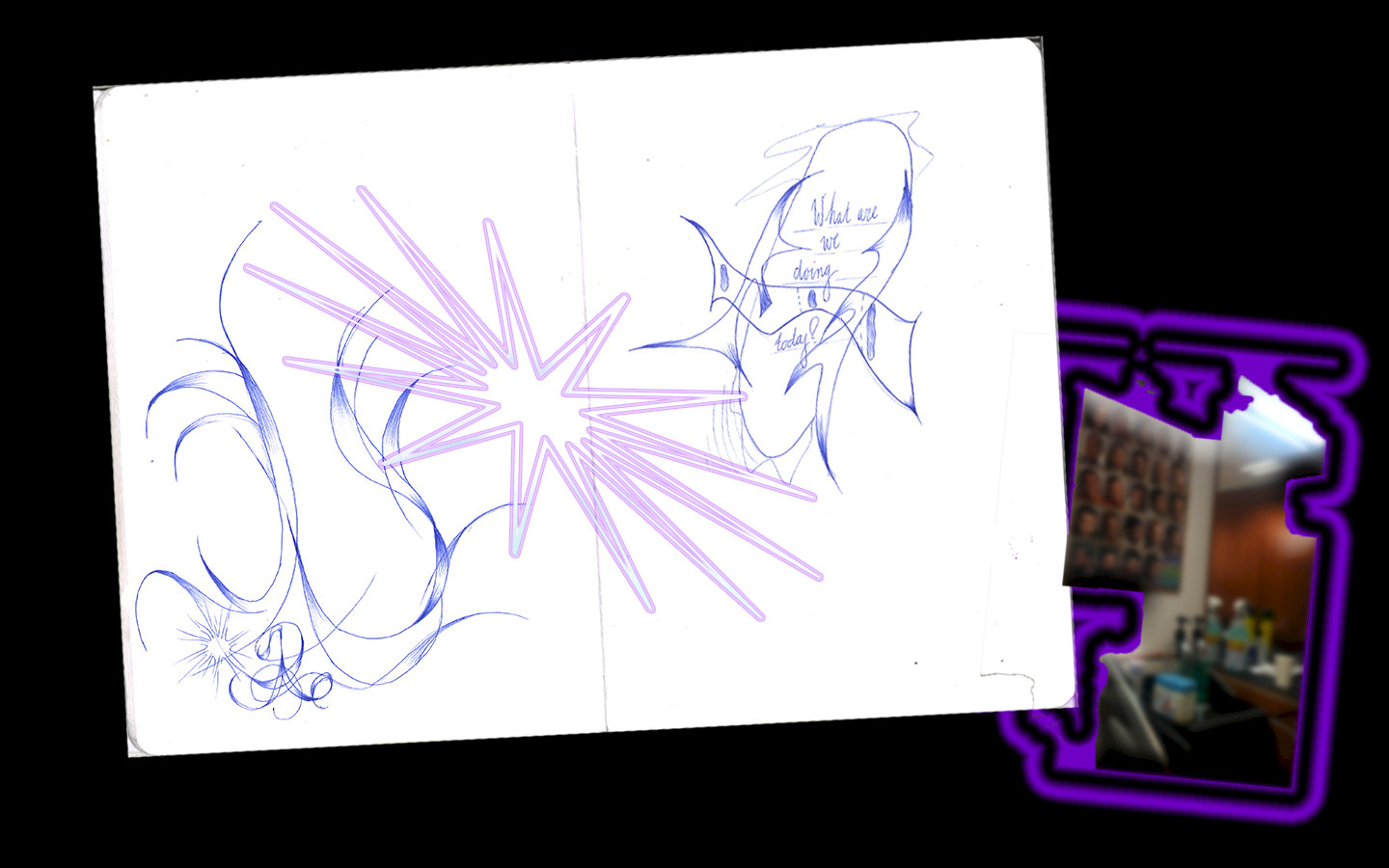
1.0 MM EXTERNAL FADE.
… To the external fade, where futurity is entangled with bendable dreams of being rendered (in)visible (6). Legacy Russel expands on the notion of remix, describing it as a technology of survival for queer and female-identifying people of colour. She acknowledges the remix as a way of creating something new out of anything already existing. The to-be-remixed thing does not necessarily have to be sonically driven in this context. Russel sees culture, society and gender as malleable materials which can go into endless loops of remix. In this text the remix is a lens to approach the presence of a polyphonic composition (7) within the black barbershop context.
Getting a fade is like seeing a remix right in front of you in the mirror, while you are veiled with a cape to protect your clothing from flying hairs. Aesthetically the fade is a way to present yourself as extremely masc. It is a hairstyle which does not ask questions, you will be perceived as straight as you never thought you could be (which is not necessarily something I would strive for, no shade). Still (as mentioned earlier) a fresh fade feels like no other, it feels brand new, and it looks brand new too. By submitting my queerness and dreams of ambiguity I get directness in return, completing the remix of what I desire and what I can get: cosplaying peak masculinity.
Secondly, a chopped and screwed (8) remix happens in proximity with the barber. The interaction continues after communicating the desired hairstyle, but non-verbally. Subtle nudges of the barber's hands, quarter-turning your head left and right. Pausing to check in the mirror if your hairline is straight, then coming in closer with his face to your face touching up crooked lines with the barber knife. A singular finger, adorned with a silver signet ring, suggests with a single touch to keep still. His hands (a large silver watch dangling on his right wrist) again on top of your head, smelling of the many products he previously used, asking politely to face down. His gentle touch and way of holding, while he makes me and others in the barbershop look pretty, deals as much with homo-erotic sentiments as it is about giving mutual care. It reminds me of moments with my queer friends, taking care of each other in a sensitive way. A soft embrace while hanging out together on the couch, listening to each other's meanderings. Or when we have dinner together before dancing, getting fab together testing outfits and looks, layering perfumes (Molecule 01 and CDG Wonderwood layered together is one of my go-tos) together, glossing our lips and brushing our eyebrows up. Sure, I am romanticising it enormously, but that is what the remix is all about. To survive entails building these re-imagined dream worlds with top coated nails, AFK (9), and typing up the stories with our bare moisturised hands to a bent dream.
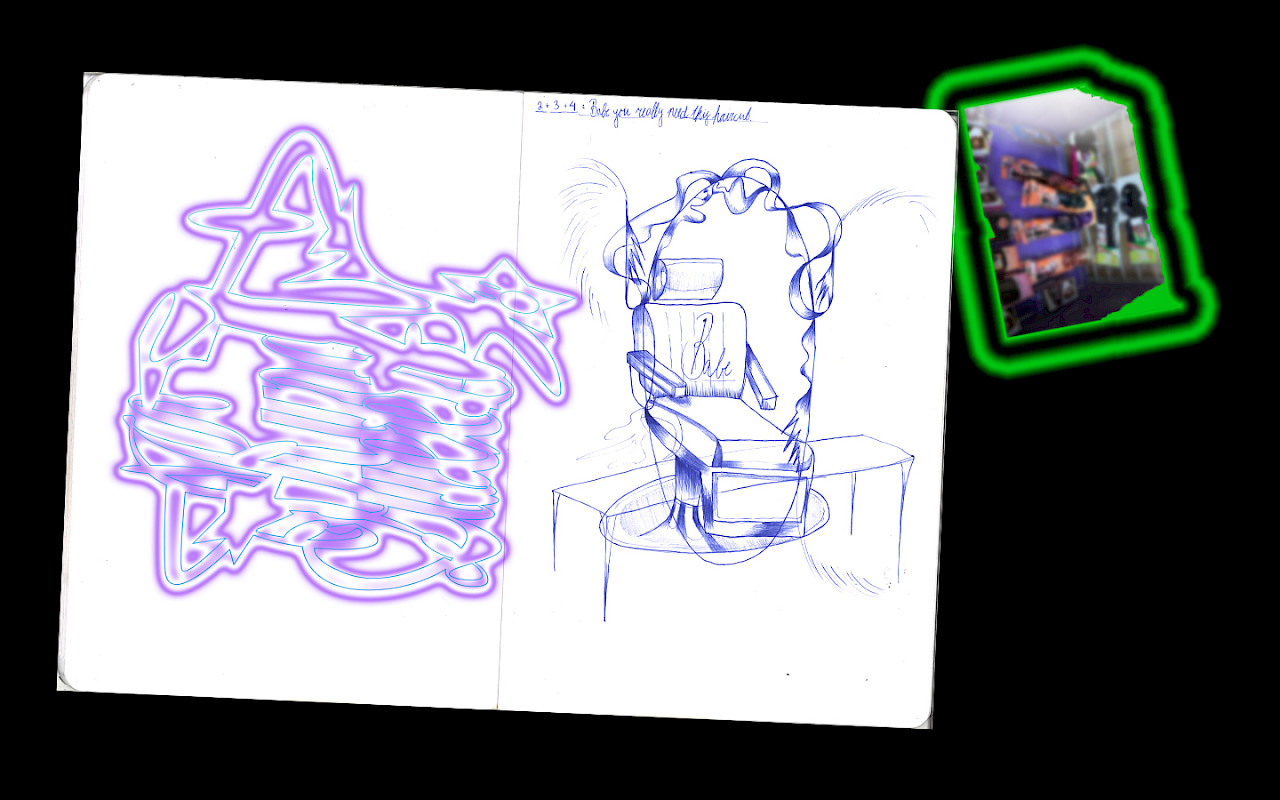
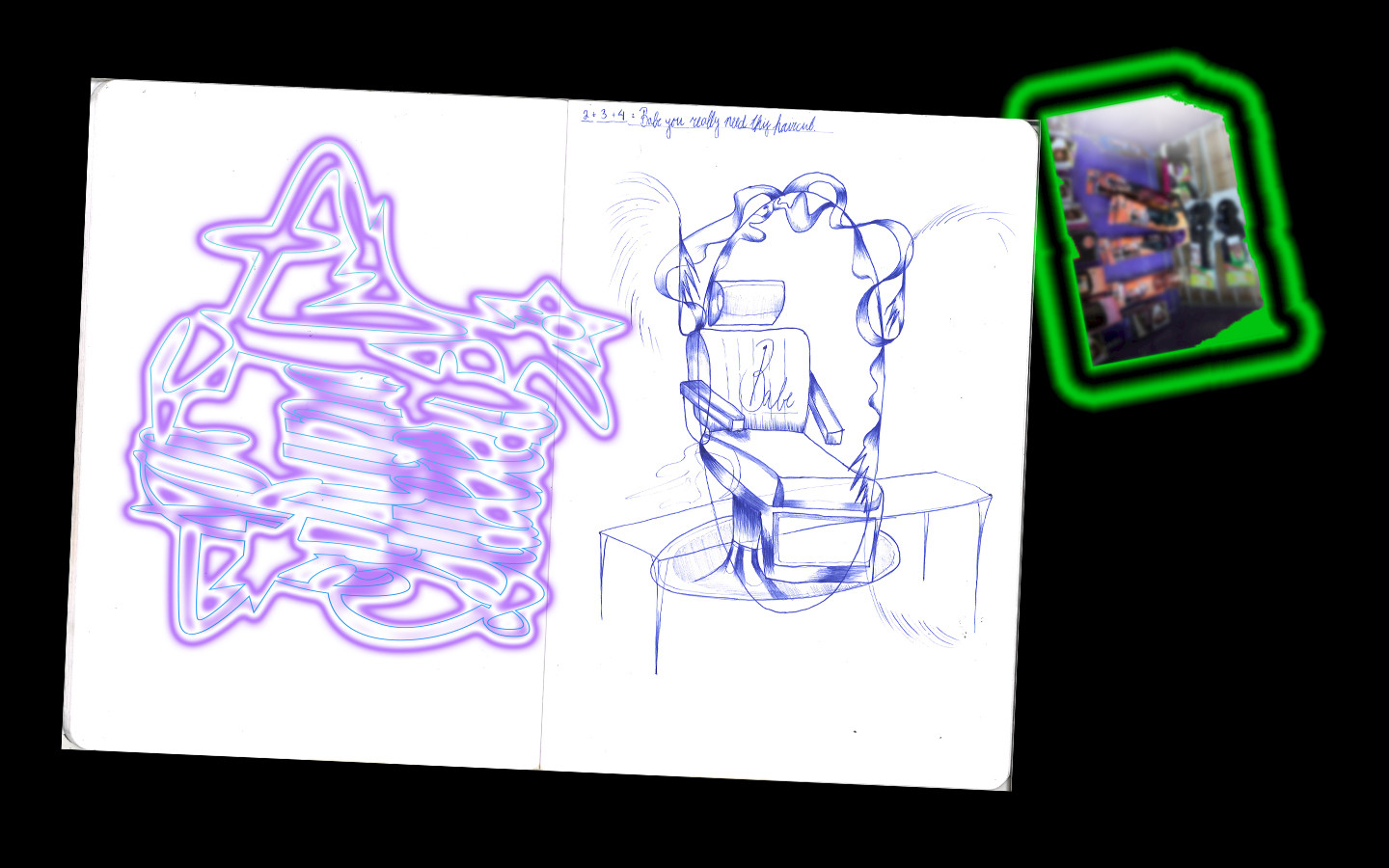
1.5 MM THE BENDED DREAM.
The haircut will be finished with a cotton pad soaked in Alcolado Glacial at home (10). The almost luminescent green liquid disinfects the shallow wounds made with the machine. Subtle (but painful) stinging sensations emerge while wiping my hairline, reminiscent of engaging in partial self-erasure. I believe mentioning partial is essential for understanding this context, as I experience the fade as something which has multiple nuances. It goes beyond a love-hate relationship. Experiencing this space is bending over in the most flexible way, finding all crevices and corners of emotions I did not know could exist simultaneously. I insist this is the beautiful imperfection of the black barbershop space, in which the fade plays a leading role. Creating and imagining through the remix can possibly make it become something to engage with from a place of appreciation. After all that is what all of us, but especially us queer babes, deserve in the end, always.
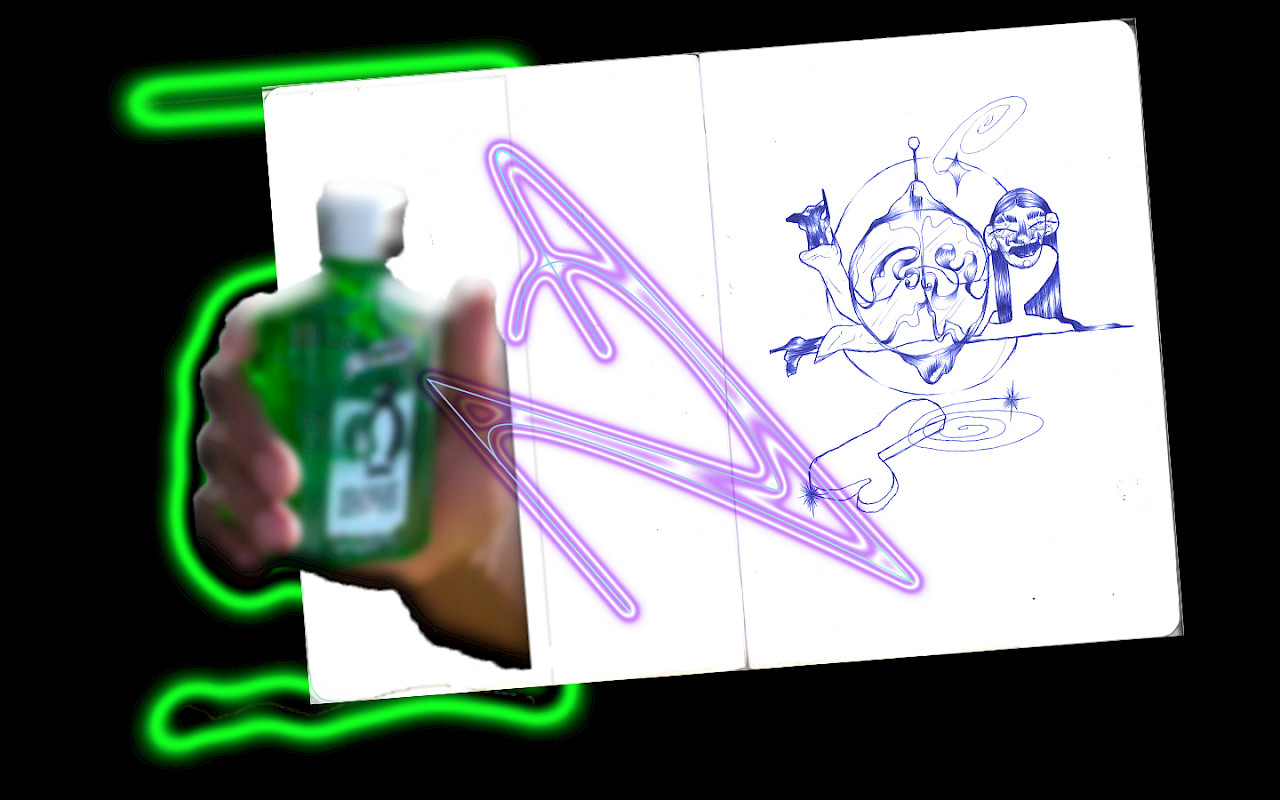
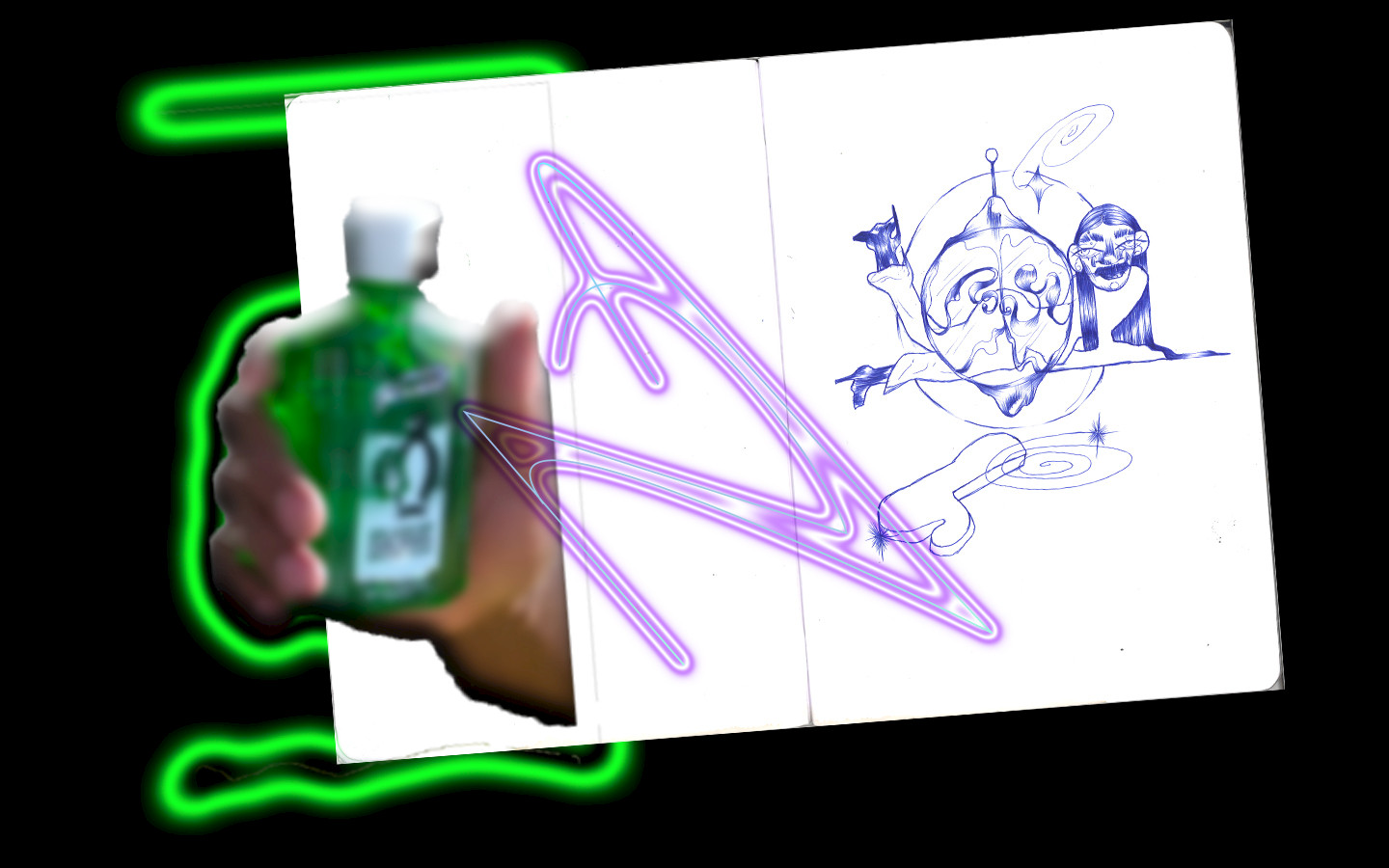
References
1. "Fade,” Oxford Languages Definitions, Google, accessed February 7, 2024.
2. “Yassification,” Urban Dictionary, last modified December 23, 2021, https://www.urbandictionary.com/define.php?term=yassification.
3. Black To Techno, directed by Jenn Nkiru (2019).
4. Hot Irons, directed by Andrew Dosunmu (1999).
5. Russel, Legacy. Glitch Feminism: A Manifesto, Verso Books, September 2020.
6. Lorde, Audre. Sister Outsider, Crossing Press, 1984.
7. Moten, Fred. Black and Blur, Duke University Press, December 2017.
8. A remix technique which involves slowing down, cutting up and editing an existing song to a new version.
9. Away from keyboard.
10. Alcolado Glacial is a liquid splat lotion (consisting of menthol and alcohol) from Curaçao. It can be used for disinfecting barbershop cuts but also to reduce itchiness of mosquito bites or bringing some cool quench on a sweltering day.
